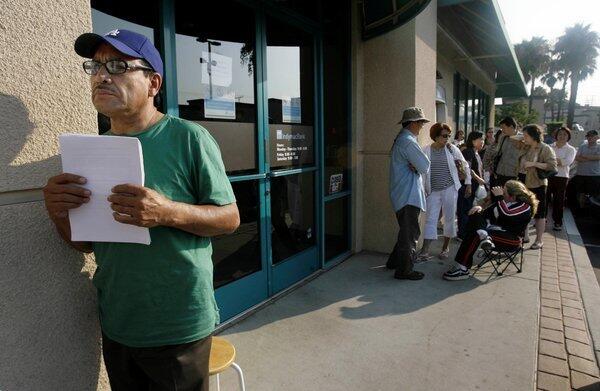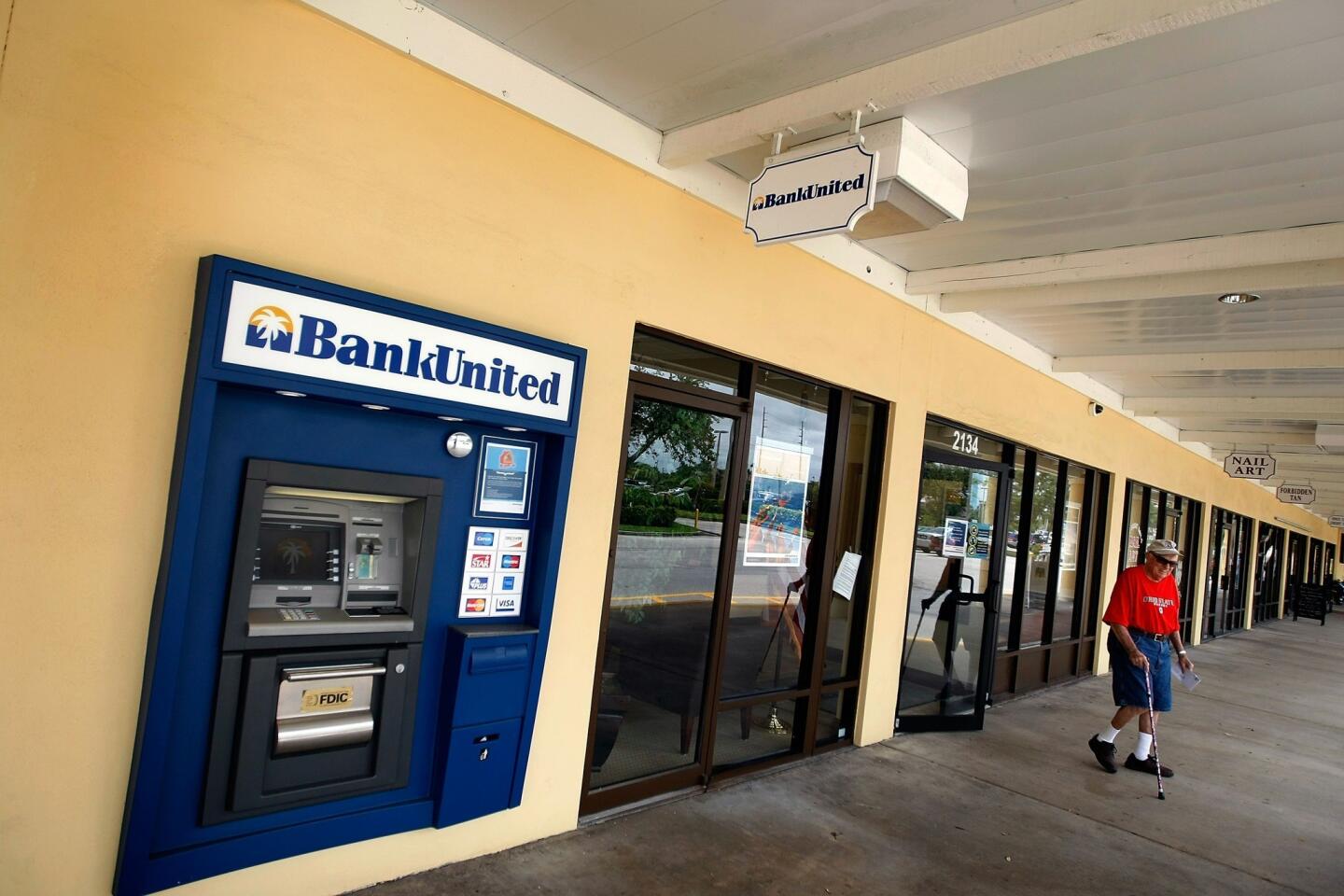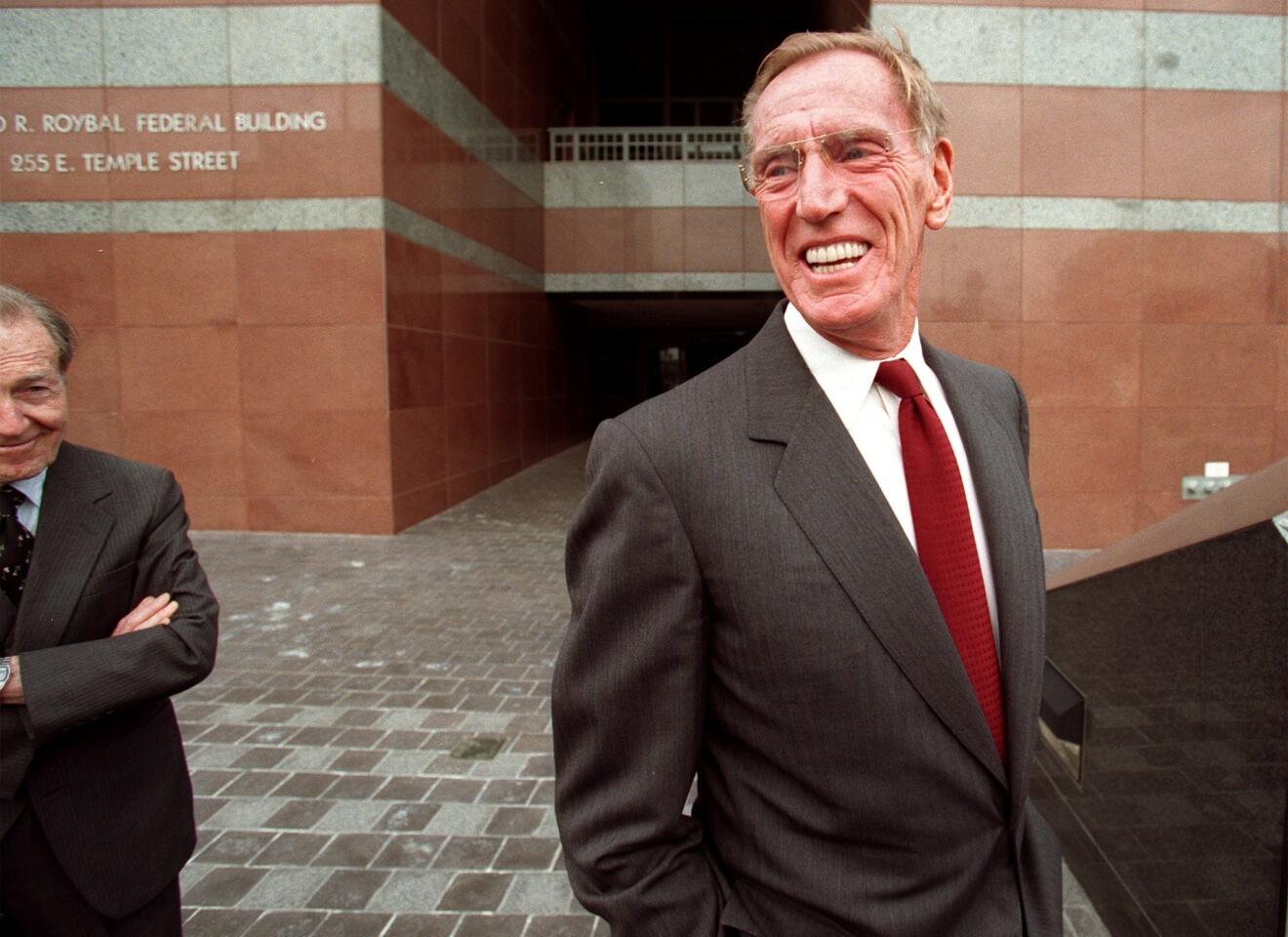Photos: The largest U.S. bank failures

Miguel Gonzalez, left, waits for his appointment at an IndyMac Federal Bank in Monterey Park. IndyMac Chief Executive Michael W. Perry rarely met a nontraditional loan he didn’t like, and the Pasadena savings and loan was sucked under by stated-income mortgages that required no documentation of ability to pay. As regulators seized IndyMac in July 2008, its branches resembled scenes from the Great Depression, with panicked depositors lining up in the heat to withdraw funds. Perry staunchly denied wrongdoing, portraying himself as the victim of the housing crash and overaggressive regulators. But he agreed in December 2012 to pay $1 million to settle government claims that he overloaded IndyMac with risky loans. He was also barred from the banking industry for life. Cost: $13 billion. (Nick Ut / Associated Press)
The mortgage meltdown and financial crisis triggered the biggest wave of bank failures since the savings and loan debacle in the late 1980s and early 1990s. Here is a look at the bank and thrift failures that caused the greatest losses to federal deposit-insurance programs.

BankUnited Financial Corp. of Coral Gables, the largest Florida-based savings institution, was seized in May 2009 by regulators who said it had run out of capital. A specialist in loans to foreigners buying Sunshine State homes, BankUnited was a top originator of pay-option adjustable-rate mortgages, which permitted payments so low that loan balances rose instead of fell. Often made without documenting borrowers’ incomes, pay-option ARMs played a role in the downfall of Washington Mutual Bank in Seattle along with Countrywide Financial Corp., IndyMac Bank and Downey Savings in California. Cost: $4.9 billion. (Joe Raedle / Getty Images)

Lincoln Savings was a conventional S&L when Charles H. Keating Jr. -- a Phoenix developer with a passion for private jets and high-rolling investments -- bought it in 1984. When Lincoln failed in 1989, thousands of depositors, including many elderly Southern Californians, lost $285 million. Keating had sunk the Irvine thrift’s federally insured deposits into junk bonds, land developments and the $300 million Phoenician Hotel, while Keating paid himself and family members $34 million. Using lawsuits and political connections to battle regulators, Keating tarred the reputations of five senators who intervened on his behalf. Keating proclaimed his innocence, saying vindictive regulators had hounded him to ruin, but was convicted in the early 1990s on dozens of fraud, conspiracy and racketeering counts. He spent less than five years in prison before his convictions were overturned and he pleaded guilty to lesser fraud charges. Cost: $3.1 billion. (Wally Skalij / Los Angeles Times)







